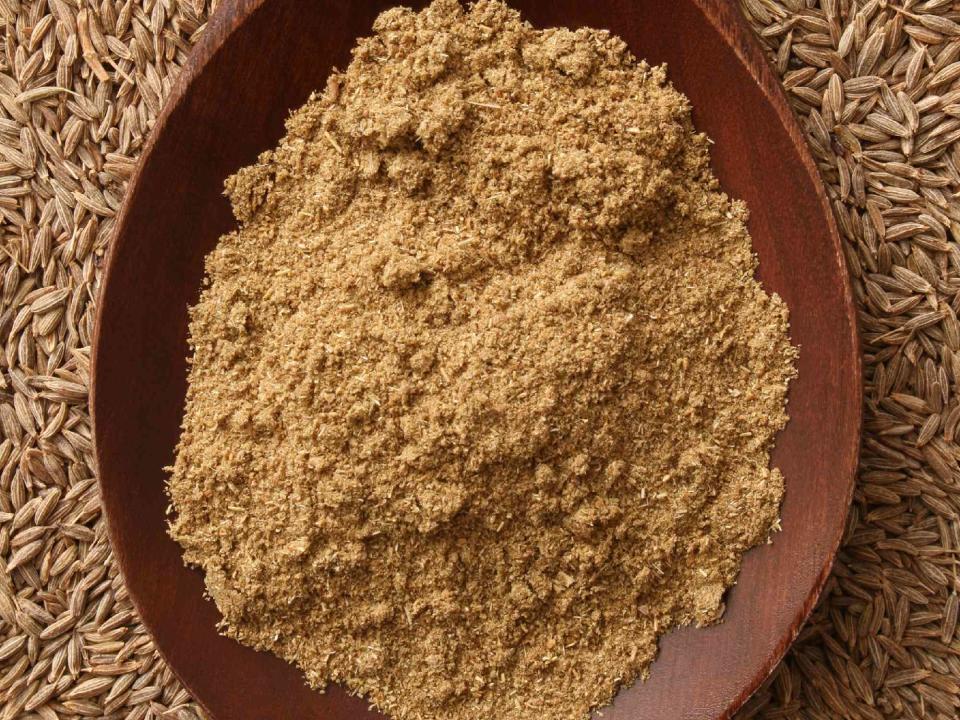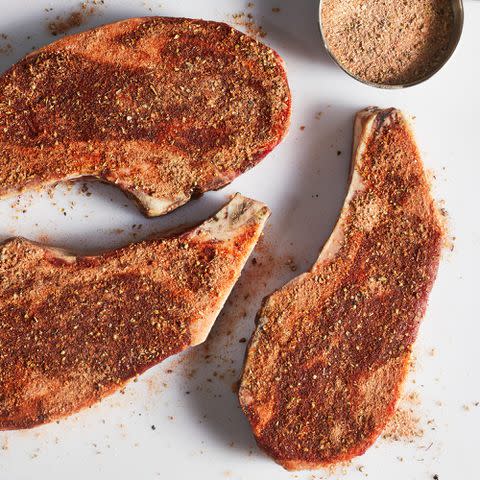The Ultimate Guide to Cooking With Cumin
Why this versatile spice is a must-have in the kitchen.

Curious about cumin? It's understandable. How easily we go about our day, blindly following the recipe, tossing in this seasoning along with everything else on the list. But what is this spice that seems quintessential to so many recipes and cuisines?
Cumin is warm and earthy and adds deep flavor and nuance to whatever you put it in. Whether you're aiming for extra oomph in your dishes, or dashing some in to nab some health benefits, it deserves a permanent place among your spices.
The Story of Cumin: History and Origins
Cumin is an incredibly popular spice made from the dried seeds of the Cuminum cyminum plant (say that five times fast). Surprisingly, it's a part of the parsley family. The seeds are small, boat-shaped and might be confused for a caraway seed, if not for being lighter in color. The brownish-yellow variety is typically what we'll see in grocery stores, but it also comes in black, green, and white.
Related: How to Stock Your Spice Cabinet for Indian Cooking
Cumin is ancient. It even appears in the Bible. What's more, evidence of the spice was present in 4,000-year-old excavations that took place in Syria and ancient Egypt. Back then, it wasn't only a spice, but a valuable product in the preservation of mummies. Cumin was used not only to treat the dead, but the living, used as a medicinal plant, carried around as a charm, and traded like money.
Since ancient times, Greek, Roman, and Indian people alike used the spice. European colonization brought cumin to Mexico and South America, specifically by the Portuguese and Spanish. It wasn't long before the whole world was consuming cumin.

Get the recipe: Steak Dry Rub Seasoning
How to Use Cumin
The flavor of cumin is quite distinctive. It's a bit sweet, a bit bitter, hearty, with a tell-tale tinge of citrus. It's warm and earthy, without being spicy, and smells tangy with a little musk. It's sold whole or ground and either one is a great way to liven up the flavors in a dish. You'll want to toast the seeds for optimum flavor, and if you're swapping whole for ground (or vice versa) just be aware that the same fact applies to most ground spices – it's more concentrated. Decrease the amount by ¼.
Cumin is most commonly used in Latin American, Middle Eastern, North African, and Indian cuisines, and plays so well with others, it holds a key position within multiple spice blends . Taco seasoning, chili powder, garam masala, curry powder, achiote blends, berbere, adobos, and bahaarat all feature cumin.
Related: What is Garam Masala?
This versatile spice responds to heat, so when you add it to the dish will determine how you taste it. If you add it at the beginning of the recipe, it'll add some earthy, zesty flavors and will be a bit more subtle due to the cooking time. Adding it at the end will bring more herbal notes.
Cumin is crucial to things like chili, falafel, or the popular Indian jeera rice. It's excellent in BBQ sauce, baked beans, soups, and marinades. It enlivens tomato-based dishes like shakshouka. It adds complexity to vegetarian dishes, accentuating the sweetness of root vegetables like beets or carrots. Add it to a rub or marinade for meat or tofu or mix it into hamburgers – it enhances the savory qualities of meat, especially beef and lamb.
Cumin Substitutes
Cumin is high in antioxidants and a good source of iron and other minerals. It's also been shown to improve blood circulation, relieve pain, and possibly support respiratory health. Cumin won't irritate your digestive system the way certain spices, especially spicy ones, will. In fact, will help digestion/ aid indigestion. It promotes bile production from the liver, which aids in digestion of fats. Cumin extract has even proven to help people with IBS.
Related: Can You Make Your Own Chili Powder?
That said, what happens if you run out? There are a few things you can use for your dinner tonight that'll get you through until you have time for a grocery run.
Garam masala, a common Indian spice blend, also contains cumin, but additionally coriander, cardamom, cloves, and pepper. It's slightly sweeter than cumin alone, and understandably a bit more complex, but you can use it in equal measure.
Curry powder is another blend that contains cumin along with other spices like turmeric, ginger, and paprika. It's warm and complex and would work just fine as a substitute 1:1. Don't worry – it won't suddenly turn your dish into only tasting of curry.
For a rich, bold flavor, smoked paprika would work well. Just use ½ the amount. For a milder swap, consider coriander. Many recipes already call for coriander alongside cumin, so we know they complement each other, but if you recipe does call for both, another swap would probably be the way to go so there isn't an overwhelming amount of coriander.
To really branch out, try fennel seeds, caraway seeds, or anise seeds. Start with half the amount and go from there.
Read the original article on All Recipes.

